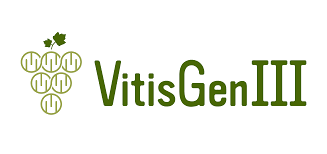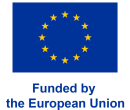GrapeBreed 4 IPM
Network
Read more
OSCAR is a French initiative dedicated to studying and guiding the use of disease-resistant grape varieties. Its main goal is to reduce reliance on pesticides by promoting vines resistant to downy mildew and powdery mildew, the two most harmful fungal diseases in viticulture. The observatory gathers data from vineyards across different regions, evaluating resistance durability, agronomic performance, fruit quality, and winemaking potential.
By working with winegrowers, researchers, and institutions, OSCAR ensures resistant varieties are tested under real conditions and remain effective long term. Beyond research, it provides guidance to farmers and data for policymakers, helping balance tradition and innovation. Ultimately, OSCAR fosters sustainable viticulture while safeguarding both the environment and wine quality.
More information: https://observatoire-cepages-resistants.fr/
Read more
SHIELD4GRAPE (S4G) – short for “BREEDING AND INTEGRATED PEST MANAGEMENT STRATEGIES TO REDUCE RELIANCE ON CHEMICAL PESTICIDES IN GRAPEVINE” is a 3-year Horizon Europe project that started in February 2024. It is coordinated by CONSIGLIO NAZIONALE DELLE RICERCHE (CNR), represented by Dr. Giorgio Gambino and it consists of 16 partners from 7 European countries (Italy, Spain, Greece, Cyprus, Portugal, France, Hungary).
The S4G project aligns with the EU Biodiversity Strategy for 2030 to combat climate change and ecosystem degradation by promoting sustainable viticulture. Grapevine (Vitis spp.), a critical crop in the EU economy, is associated with significant agrochemical use and biodiversity risks. S4G seeks to enhance the resilience of the viticulture system against pest diseases in the context of climate change through agroecological approaches.
The project will establish demonstration fields across major EU wine-growing regions to test integrated pest management protocols and resilient grapevine genotypes.
S4G will contribute to safeguard the territory (particularly those areas with a high concentration of vineyards), human health, farmers, the population living in grape-growing areas and consumers.
More information: https://shield4grape.eu/
Read more
VINOVERT was an innovative project for the wine sector in SUDOE region (wine and vineyard businesses in the Southwest European region) over the period 2016-2019, in order to guarantee the competitiveness of companies in the long term. The project focused on news market requirement in terms of health and environment. Anticipate the new demand for sustainable viticulture offering guarantees of ‘naturalness’ and environmental responsibility is still key.
The project reached 3 main objectives:
- Understand the reality of consumer and citizen arbitrations on pesticide, naturalness, social responsibility issues;
- Develop concretely on the ground the viticulture ad oenology evolution possibilities, while evaluating the production (additional) costs and the productivity gains;
- Explain the behavioral locks which oppose to the demands of rupture and the possibilities of institutional and regulatory reorientations.
More information: https://www.vinovert.eu/en/
Read more
VitisGen3 is a 4 year USDA-NIFA Specialty Crop Research Initiative grant that was funded in 2022, and is the latest iteration of an exciting USDA-funded grape breeding project that has been ongoing for over a decade.
When the original VitisGen launched in 2012, the project’s aim was to leverage cutting edge technologies and advances in socioeconomic research to speed up the pace of discovery for the next generation of grapevines. Through the collaboration of a cohort of multidisciplinary and multi-institutional researchers, the project was a success and ushered in a new era of grape breeding in the US.
VitisGen2, funded by the USDA in 2017, has led to the development of new grapevine breeding lines and varieties as well as tools for grape researchers and breeders. These include a low cost DNA marker platform, genetic maps for more than 20 Vitis families (including the identification of over 70 marker-trait associations), and a powdery mildew phenotyping robot.
The goal of VitisGen3 is to bring these groundbreaking improvements in grape breeding efficiency and disease resistance over the finish line. To accomplish this, four objective areas have been identified:
- Objective 1: The identification and testing of candidate genes for powdery mildew resistance.
- Objective 2: To advance computer vision phenotyping, AI, and DNA markers for US grape breeders nationwide.
- Objective 3: The development of sustainable management practices for establishing new disease resistant vineyards.
- Objective 4: Using eye-tracking technology to further elucidate understanding about how consumers navigate the grape products in the context of “information overloading” and decide to purchase sustainable grape products.
More information: https://vitisgen3.umn.edu/
Read more
IPMorama is not an acronym; the suffix ‘-orama’ has been appended to IPM (Integrated Pest Management) to indicate the concept of ‘taking the wider view’. This reflects the central ambition of the project, which seeks to develop IPM-focused varieties by integrating tools, resources and knowledge across the practice ecosystem for application in variety-centric IPM strategies. The overall objective of the IPMorama project is to deliver a more sustainable food production system. It will be a major driver to reduce pesticide usage in conventional agricultural systems, and to enable the viable expansion of organic systems to one quarter of all agricultural production in the EU.
This will be achieved by development of a ‘practice ecosystem’ that supports the breeding, deployment and uptake of varieties that are designed to underpin IPM approaches for important diseases/pests in wheat, potatoes and grain legume species (soybean, white lupin and pea) in Europe.
IPMorama will achieve this by enacting 5 component pillars:
- Understand the genetic composition of varietal resistance in target crop/pest systems
- Understand and map the distribution of the target pathogens/pests at the landscape level
- Develop specific integrated pest management practices
- Developing the knowledge infrastructure for competent use of variety-centric IPM
- Understanding opportunities and barriers for sustainable exploitation of key experimental results.
Read more
VITFIT is the largest applied research project in the field of organic viticulture in Germany. Topic is the control of downy mildew in view of the planned ban of copper-based fungicides and the serious impacts of the climate change. Main aim of the umbrella project is the optimization of existing strategies, the combination and development of new approaches to reduce the use of copper in the medium term. In addition, the breeding of fungus-resilient grapevines (PIWI) is being progressed by analyzing genetic resources for new resistances to downy mildew and introducing them into elite breeding lines in order to achieve a robust and long lasting field resistance. Accompanying research activities promote the market acceptance of PIWIs among winegrowers and consumers. This joint project brings together all leading institutions of German viticultural research, organic growers’ associations, as well as industry representatives and organic wine growers.
More information: https://vitifit.de/en/





























